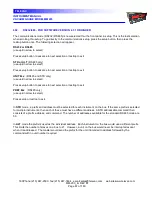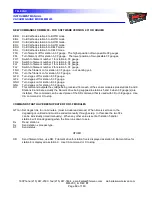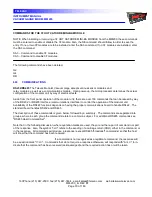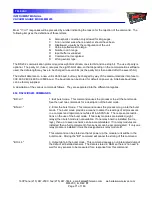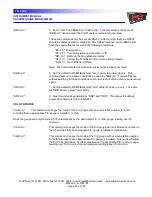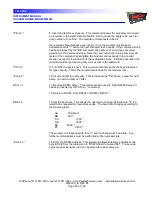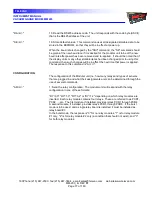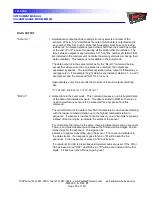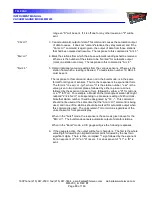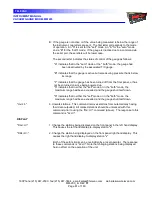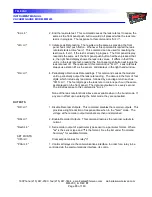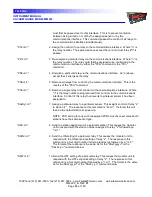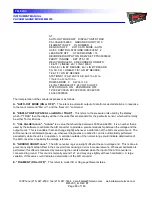
INSTRUMENT MANUAL
VACUUM GAUGE MODEL MM200
160Phone:(215) 947-2500 fax:(215) 947-7464 e-mail:sales@televac.com web site:www.televac.com
MM-200_im REV M
Page 81 of 160
TELEVAC
B. If the gauge is not active or if the value being measured is below the range of
the instrument, two letters are sent. The first letter corresponds to the mode
of operation. An "S" is sent for the "self" mode, An "A" for the "auto" mode
and a "B" for the "both" mode. If the gauge is inactive due to a command via
the serial port, these letters will be lower case.
The second letter indicates the status of control of the gauge as follows:
"A" indicates that in the "auto" mode or the " both" mode, the gauge had
been deactivated by the associated T/C gauge.
"B" indicates that the gauge is active but is measuring pressure that is below
its range.
"F" indicates that the gauge has been turned off from the front panel, or has
not been turned on since being powered up.
"S" indicates that in either the "self" mode or in the "both" mode, the
maximum range had been exceeded, and the gauge shut itself down.
"S" indicates that in either the "self" mode or in the "both" mode, the
maximum range had been exceeded, and the gauge shut itself down.
"Ux<cr>"
6. Unmark stations. This command removes stations from automatically having
their data outputted. All marked stations should be unmarked with this
command prior to using the "Rx<cr>" command (above). The response to this
command is "A<cr>".
DISPLAY
"DLx<cr>"
1. Change the stations being displayed on the front panel in the left hand display.
This causes the left hand display-to-display station "x".
"DRx<cr>"
2. Change the station being displayed on the front panel right hand display. This
causes the right hand display-to-display station "x".
Both of these functions can be overridden by a local operator. The response
to these commands is "A<cr>". Note that changing stations being displayed
has no effect on the operation of the unit.

